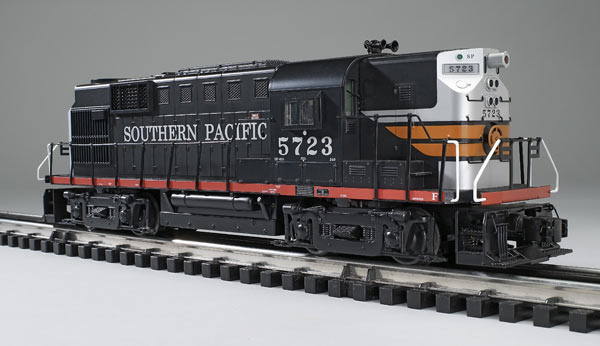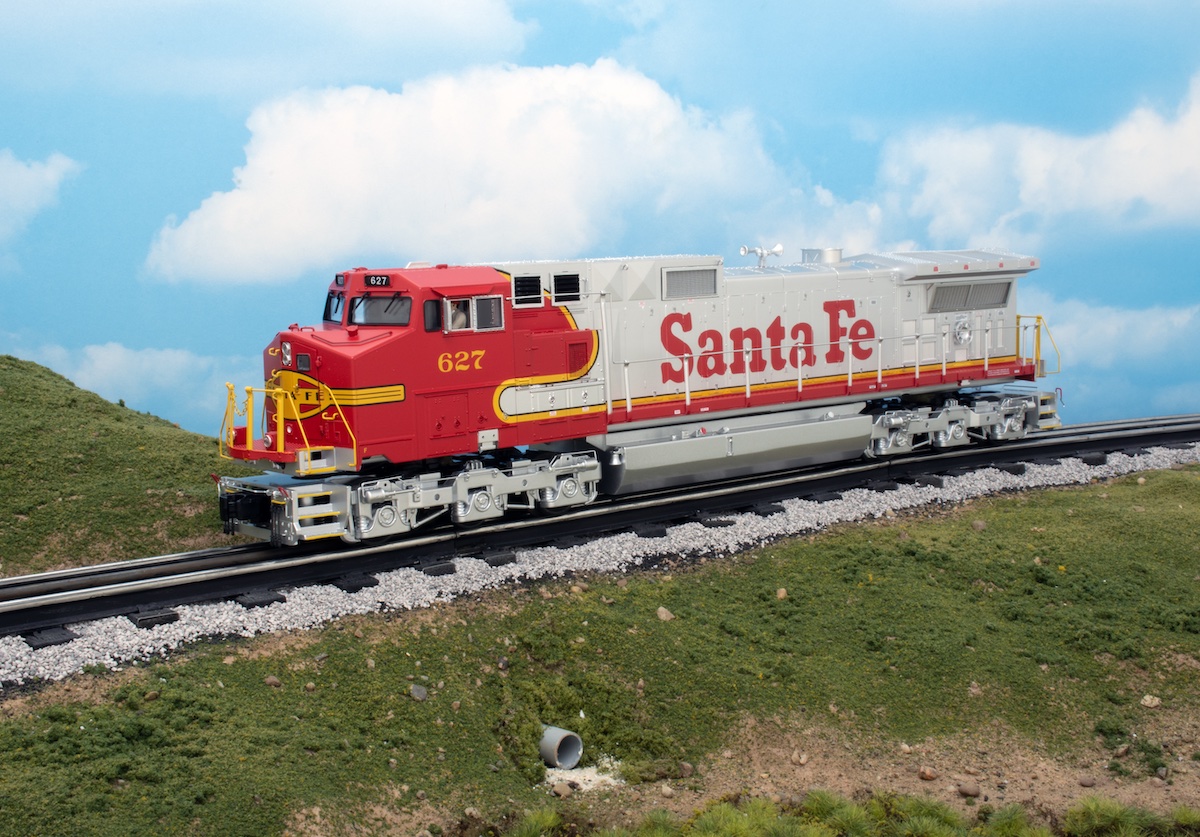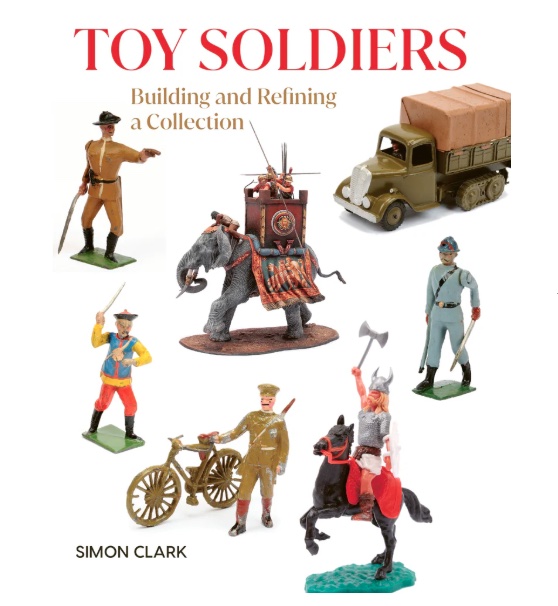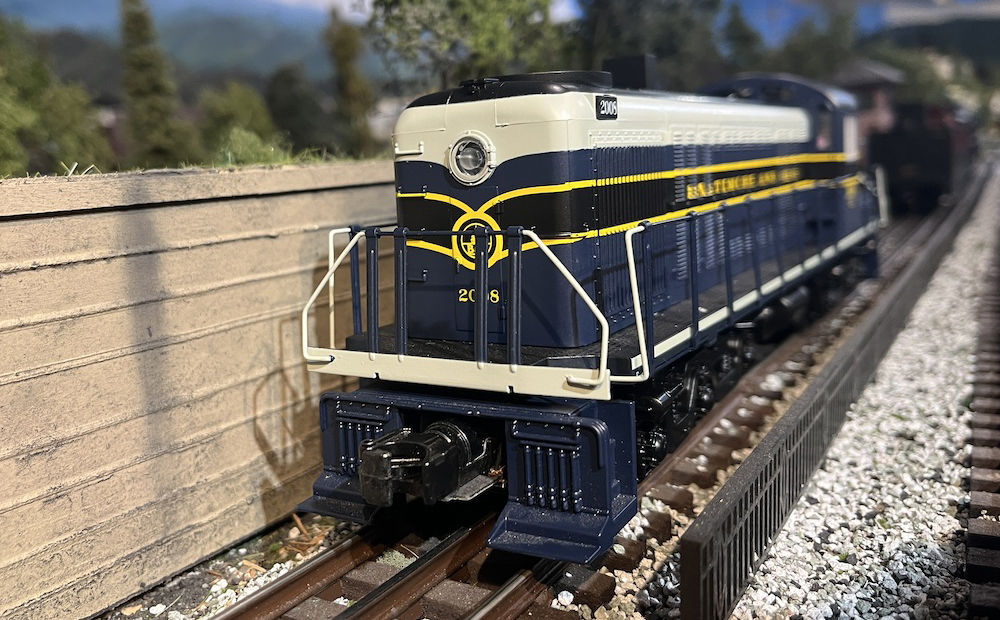In the first and second generation of dieselization, Alco was the perennial odd man out. Although legendary for its steam locomotive designs and one of the first builders to dabble with diesel power, its diesel locomotives never really attained more than niche status with America’s railroads. The company quietly exited locomotive production in 1969.
But before the decline of Alco was cast in stone, it proved to be ready for a fight with both the Electro-Motive Division of General Motors and General Electric. The Alco RS-11 road switcher was a worthy challenger to those giants.
The RS-11, an 1,800-horsepower road switcher, was built from 1956 through 1964 by Alco and Montreal. A total of 356 units were built for U.S. railroads and another 99 for Mexican lines. The B-B trucked unit became a favorite of the Norfolk & Western, which ordered 99 of them. The turbocharged RS-11 accelerated faster, offered a higher tractive effort rating, and was more fuel efficient than the GP9, its main rival from EMD.
The number of Alco diesels in use declines each year, but you can still find a few RS-11s on short lines or in museum fleets.
Opening the box
For a locomotive that is generally the same shape and size as a GP7 or GP9, the RS-11 looks bulkier and distinctively different. Why? It has to be the notches on the corners of the body. I’d bet that the notches served no real function other than cosmetic (sort of like fins differentiating car makes in the 1950s).
So when I pulled this O gauge model from MTH Electric Trains out of the box, I was wired to think, “Oh yeah, ready to pull an ore train over the Rockies,” versus, say, a wimpy little GP9 that would probably have a hard time making a caboose hop across town.
The model is nicely brick shaped. The pilot has all the expected details: brake and multiple-unit lines, uncoupler arm, step texture, and texture on the brakeman’s steps on the ends.
The decks have texture detail, and you’ll find a brake wheel in the center of the face of the hood. You’ll also find add-on grab irons on both sides of the snouts for crew access to the cast-in sand hatches just beneath the number boards. Another line of grab irons rises from the deck on the fireman’s side all the way to the rooftop.
The ends of the hood have an interesting assortment of light fixtures: headlights, Mars lights, marker lights, and the number board. There is an extra long lamp housing that looks like it is some sort of ion cannon for blasting gravel trucks off grade crossings.
The jumbo light housing does double duty – illuminating a red marker when the direction is reversed. In addition to the headlight, the model includes a flashing strobe, green markers, and illuminated number boards. Visually, these are very cool features.
The body has good cast-in detail that includes seams, hinges, and handles. Screens are all cast in, although there are some great three-dimensional screens near the smoke unit’s fill spot.
The cab has crew figures as well as an interesting detail, an outward extension to the cab windows once common on railroads in cold-weather states. The application of the black, silver, orange, and red paints is first rate. Printed nomenclature items like builder’s and trust plates and “F” for front are clean and crisp.
On the test track
The RS-11 has two power pickup rollers on each truck, and those rollers are approximately 6½ inches apart between pairs. The model uses traction tires.
I was expecting to find a magnetically attached access hatch for the control switches (it was mentioned in an on-line manual). The hard copy manual that comes with the model correctly notes that controls for sound volume and smoke units, as well as the battery charger socket and two-to-three rail conversion, are located on the frame. So in this one regard, this model seems slightly dated compared to the handy access to controls found on other recent MTH products.
Alco diesels had a distinctive sound, and it’s nicely reproduced by the speaker system. All advertised command-control functions, such as crew sounds and couplers, operated well.
Our conventional-mode low-speed average was 4.5 scale miles per hour, while the command-mode low-speed average was 3.8 scale miles per hour. Our high-speed average was 55.4 scale miles per hour. I was a bit surprised at the high speed, but then Alco didn’t design this to pull the Broadway Limited. Fifty-five is a respectable pace for freight hauling, and the model’s 1-pound, 11-ounce drawbar pull will certainly move the merchandise.
The Premier line RS-11 by MTH is a solid, reliable model that performs well. While it may not have an exotic appearance, those notches on the upper corners of the shell set it apart from run-of-the-mill Geeps, which dominated railroading of its time. If your hobby interest lies in the late 1950s through mid-1960s, this locomotive may find a home on your layout.
Features: O-31 operation, two can-style motors, ProtoSound 2.0 sound and control system, smoke unit, coil couplers















Too bad the top light is turned 90 degrees. None of the RS-11's I'm familiar with had a vertcal light; they were all horizontal. The prototype photo in the magazine shows this well.